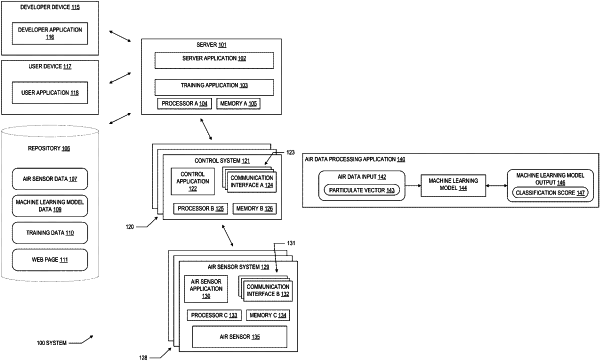| CPC G06F 16/7335 (2019.01) [G05B 13/0265 (2013.01); G06F 18/24323 (2023.01); G06N 3/08 (2013.01); G06N 5/04 (2013.01); G06N 20/00 (2019.01); G06T 5/50 (2013.01); G06V 10/96 (2022.01); G06V 20/41 (2022.01); G06V 20/46 (2022.01); G06V 20/52 (2022.01); G06V 20/64 (2022.01); G06V 40/166 (2022.01); G06V 40/172 (2022.01); H04N 5/33 (2013.01); H04N 23/611 (2023.01); F24F 11/63 (2018.01); G01J 2005/0077 (2013.01); G01J 5/48 (2013.01); G06F 16/252 (2019.01); G06T 2207/10028 (2013.01); G06T 2207/30201 (2013.01); G06V 20/44 (2022.01)] | 20 Claims |

|
1. A method comprising:
receiving air sensor data from an air sensor, wherein the air sensor data comprises a particulate vector;
generating a machine learning model output from the air sensor data using a machine learning model, wherein the machine learning model output comprises one or more of a filter classification vector and air quality data and is generated using a processor that:
generates calibrated data from filtered sensor data and unfiltered sensor data to a calibration model, of the machine learning model, to output the calibrated data,
generates the filter classification vector from the calibrated data using a filter model of the machine learning model, and
generates the air quality data from the calibrated data using an air quality model of the machine learning model; and
transmitting, by a control system, a notification to a heating, ventilation, and air conditioning (HVAC) control to adjust settings for at least one of a damper, a fan, or combinations thereof, using the machine learning model output.
|